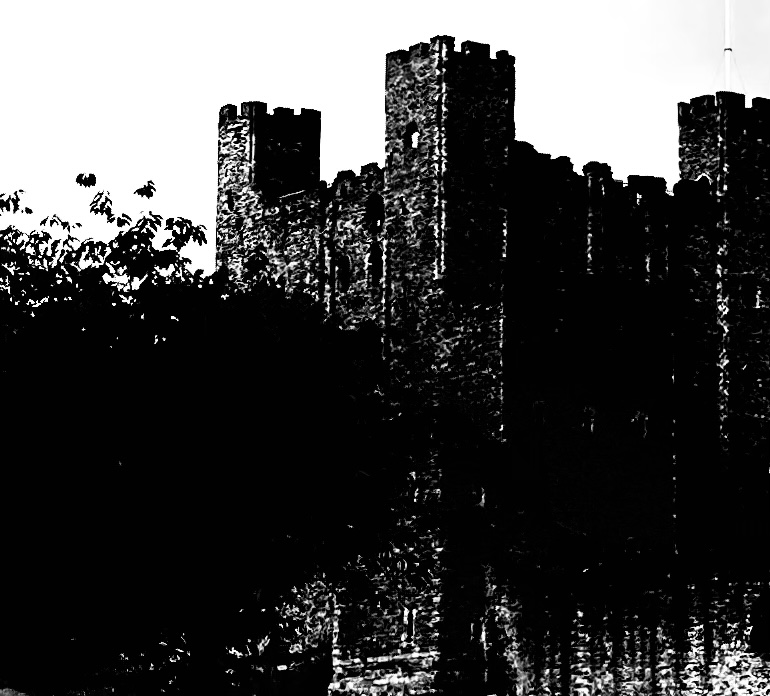□ Anderson, Poul: THREE HEARTS AND THREE LIONS
□ Bellairs, John: THE FACE IN THE FROST
□ Carter, Lin: “World’s End” series (2 of 5)
□ de Camp, L. Sprague: LEST DARKNESS FALL
□ Dunsany, Lord
□ Howard, R. E.: “Conan” series
□ Leiber, Fritz: “Fafhrd & Gray Mouser” series; et al
□ Lovecraft, H. P.
□ Moorcock, Michael: STORMBRINGER; STEALER OF SOULS
□ Norton, Andre
□ St. Clair, Margaret: SIGN OF THE LABRYS
□ Tolkien, J. R. R.: THE HOBBIT; “Ring trilogy”
□ Vance, Jack: THE EYES OF THE OVERWORLD; THE DYING EARTH; et al
Some of it I recognized (regenerating trolls from Anderson, snakes, clever fighters, and ruined cities from Howard, disappearing spells from Vance, adventurers on heists and thieves with mild magical abilities from Leiber, Law and Chaos from Moorcock, elves, dwarves, and halflings from Tolkien, complex multilevel dungeons from St. Clair), some of it took me a while. (The mind flayer, for instance, seems to have been inspired by the cover of Lumley's The Burrowers Beneath, which depicts a cthonian, a later monster in the Lovecraftian tradition.) Quite a few of them have questionable connections to D&D (LEST DARKNESS FALL is fun but doesn't seem to have much to do with D&D), and likely were just Gygax's favorite books. The most Lovecraftian element of orthodox D&D, as far as I can tell, is the books that can make you powerful or drive you nuts or cost you levels (book of vile darkness etc.); otherwise, the monsters are usually killable, the books and monsters don't drive you nuts by looking at them, and there is a relative lack of tentacles. Gygax didn't particularly like Tolkien (one of the reasons the demihuman level limits were so low), and the game started out much closer to the sword and sorcery/low fantasy pole to begin with and got more high fantasy with Dragonlance.
There is a book, but I hesitate to recommend it. I did read Jeffro Johnson's Appendix N book (for the uninitiated he is friends with, and the book is published by, Vox Day, a notorious far-right author who's engaged in harassment campaigns and attempts to rig the Hugo awards), and it actually picks up a lot of the contributions each of the books makes to D&D, and I learned some things I found quite fascinating about the books I missed (the green slime monster and psionics being in Hiero's Journey, for instance, Zelazny's Jack of Shadows as the prototypical thief along with the Gray Mouser, or Nine Princes in Amber as a model for the limited number of monks and druids at high levels). You can decide how you want to proceed given the author's associations. Some options might include borrowing it from a library that has it, buying one copy and sharing it among your friends to diminish your support for the guy; donating twice the price to a left-leaning charity of your choice as a sort of 'carbon offset'; or...other methods I won't mention here. It is, unfortunately, the only semi-scholarly treatment of Appendix N I know of; there's a book of short stories by the same authors as the Appendix N authors but that's not the same thing. (Someone else really needs to write a book...)
I'd also add that 5th edition is, as far as I know, the first to have its own list of inspirational reading, which includes a bunch of additional authors who have published in the intervening 40 years and is somewhat more diverse. I'm not sure about the copyright implications of reproducing it here--I think it would be fair use, but it's not all over the web like Gygax's Appendix N, and Hasbro's lawyers are likely much better than TSR's. But if you have a copy of the 5e books, open them up and take a look.

